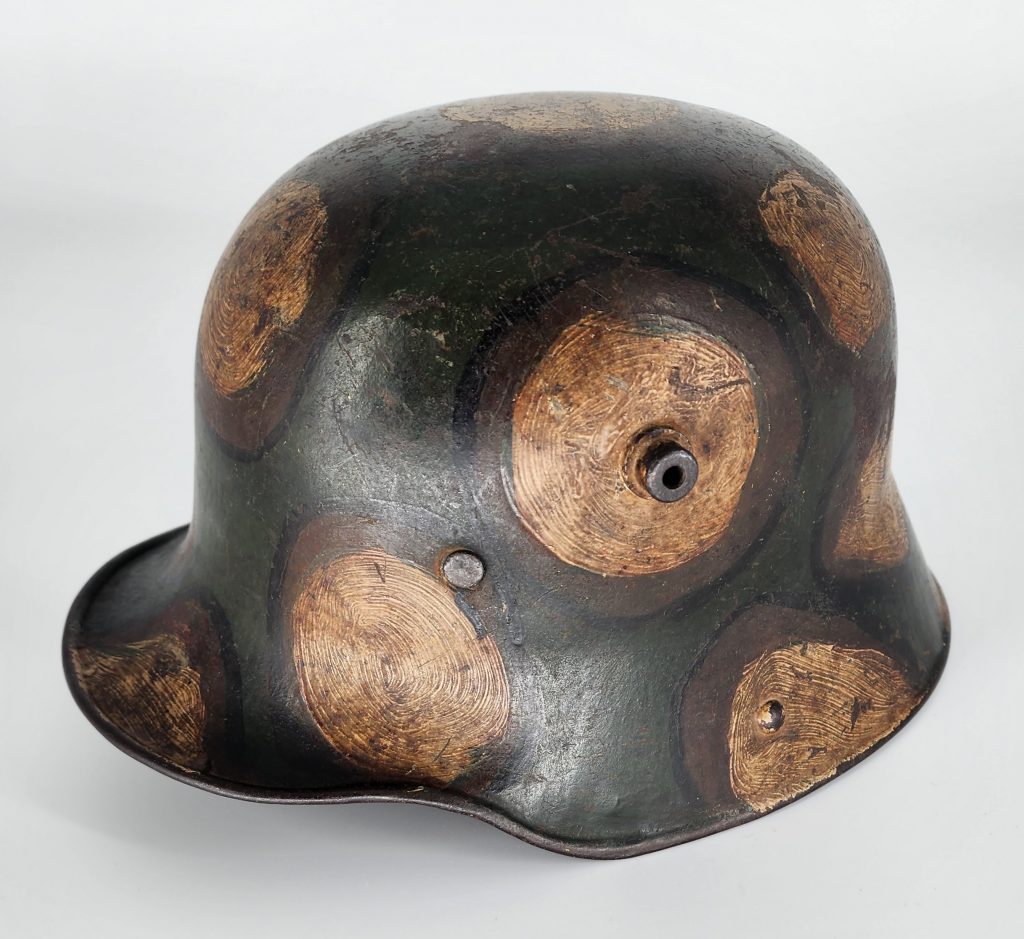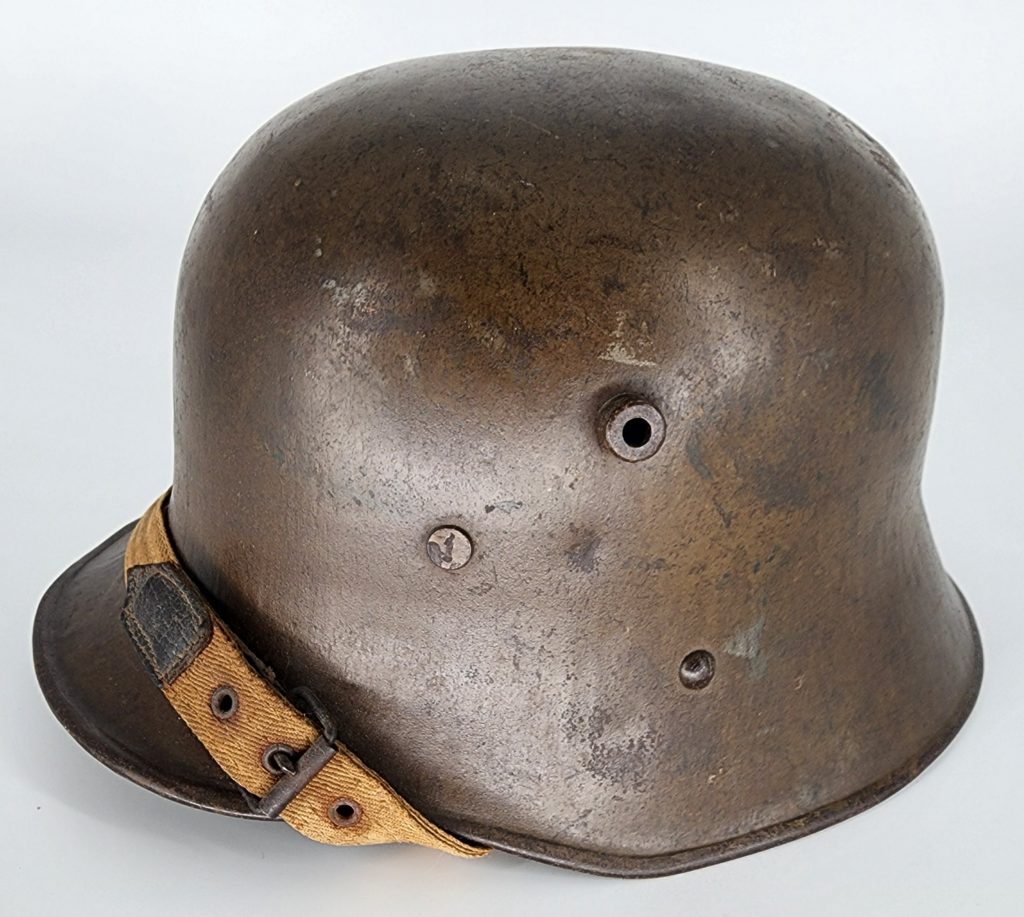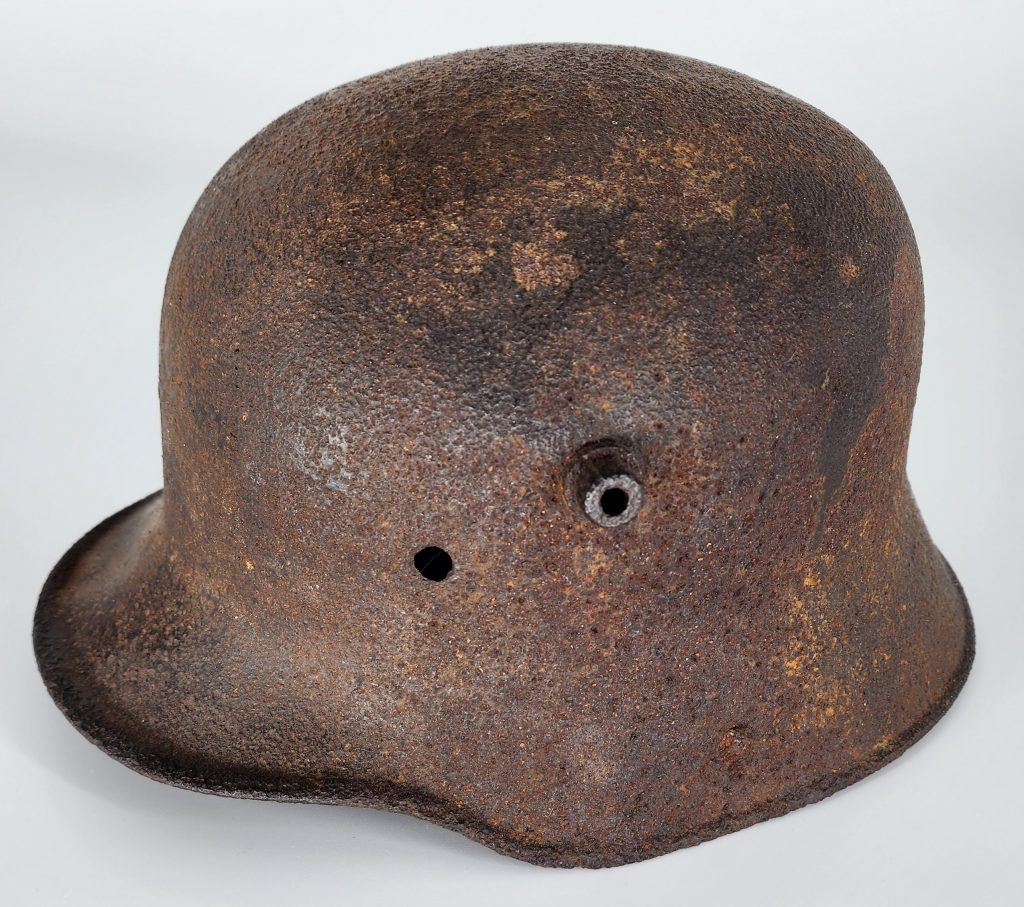The WWI Stahlhelm (‘steel helmet’) was a German military steel combat helmet intended to provide protection against shrapnel and fragments of grenades. The term Stahlhelm translates roughly to steel helmet. The armies of major European powers introduced helmets of this type during World War I. The German Army began to replace the traditional boiled leather Pickelhaube (‘spiked helmet’) with the Stahlhelm in 1916.
There are basically two models of the WWI German Stahlhelm, the M16 and the M18. Some will refer to an M17 which is an M16 shell with a liner that has a steel band instead of a leather one. The M16 and M18 helmets are fairly similar in appearance. The only major difference is the way the chinstrap attaches. The M16 uses the M91 style Pickelhaube chinstrap which attaches directly to keyed lugs which are riveted directly to the helmet’s skirt. You can see the rivet on the exterior of the shell towards the bottom. The M18 added chinstrap bails riveted directly to the liner, so there are no exterior rivets visible.
WWI German M16 Helmet with Camouflage. This is a rarer type of camouflage than the standard blocks separated with black lines.

WWI German M16 Helmet with standard camouflage. Note the hole in the front. This was a result of a direct hit as the liner shows damage as well as staining.

WWI German M18 Helmet. with postage stamps and mailing label on the top from when the U.S. soldier mailed home his souvenir.

WWI Austrian M17 Helmet. The Austrian Helmet is very similar to the German helmet but has a brownish color and a cloth chinstrap.

WWI German M16 Helmet.

